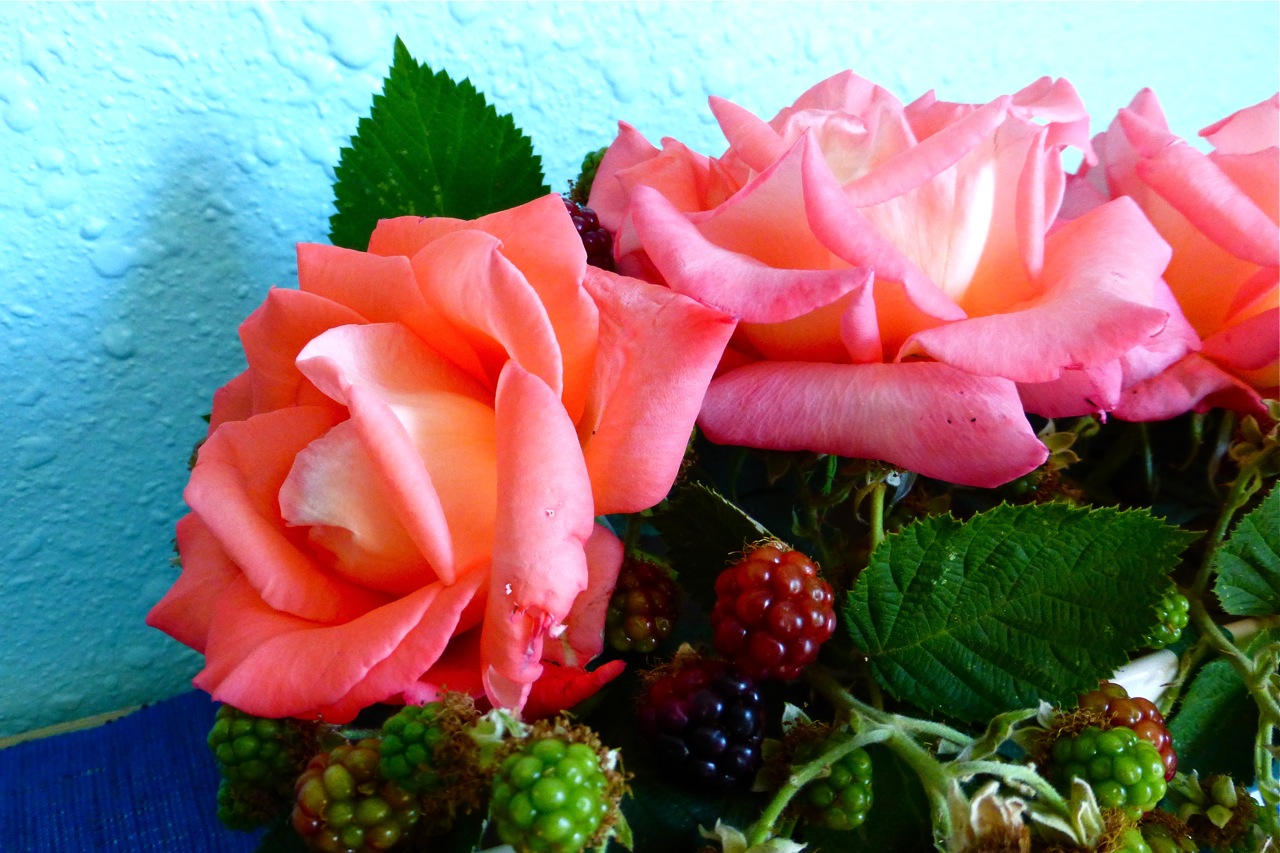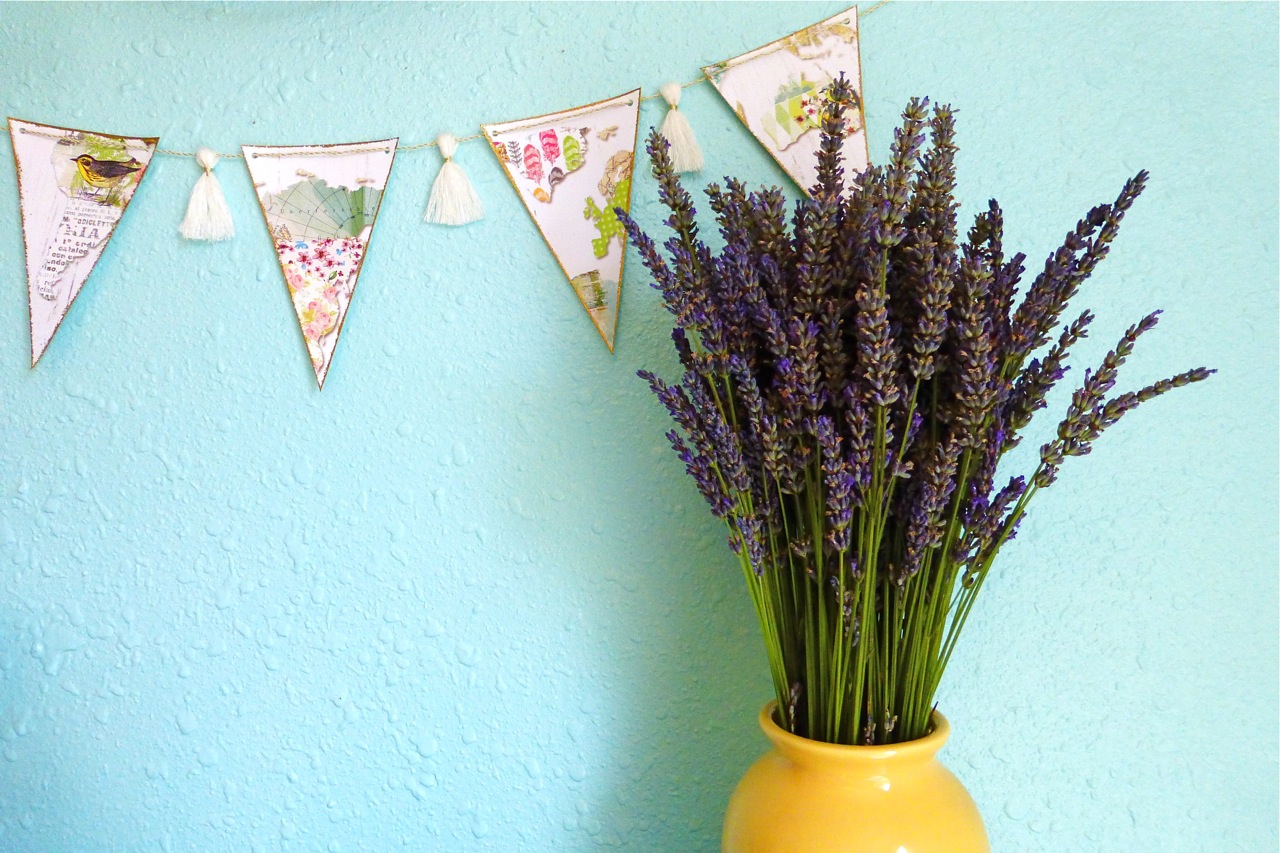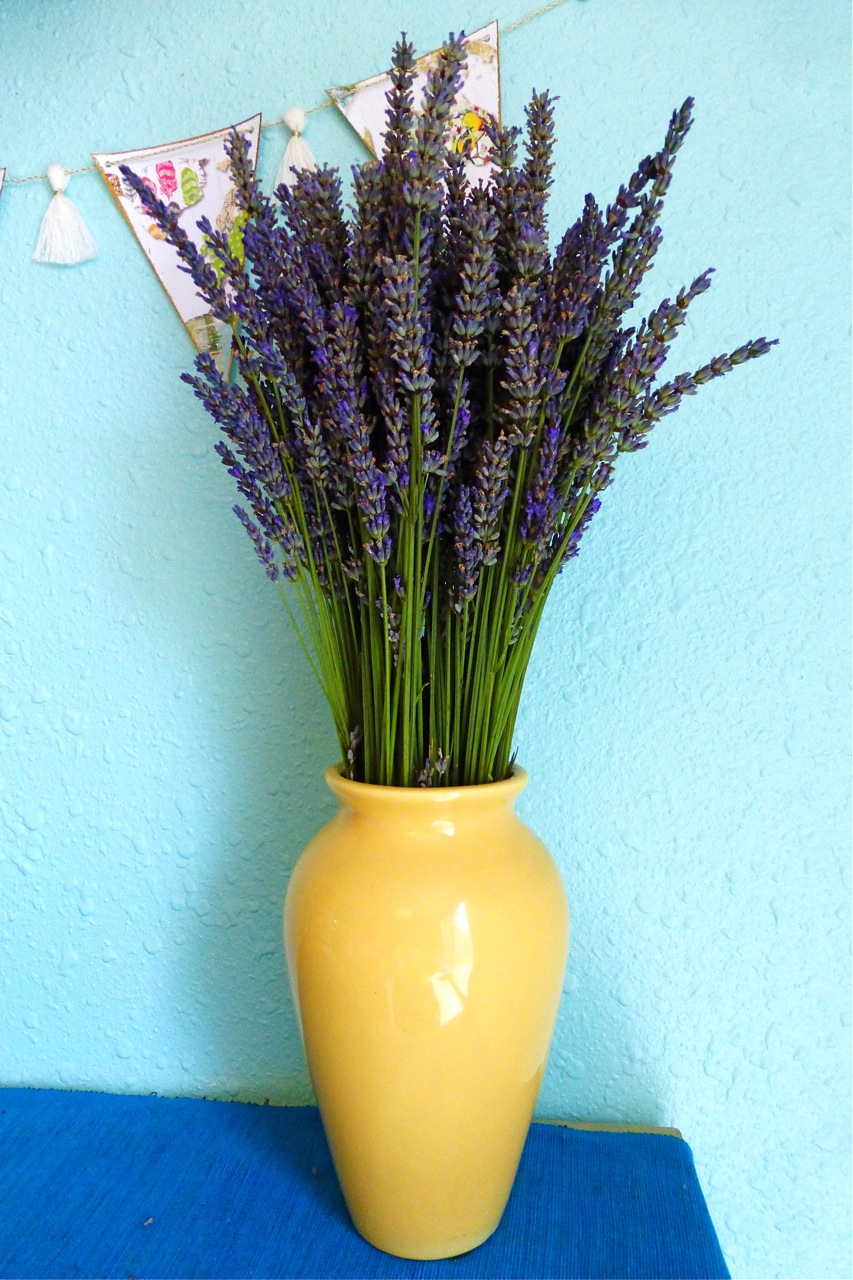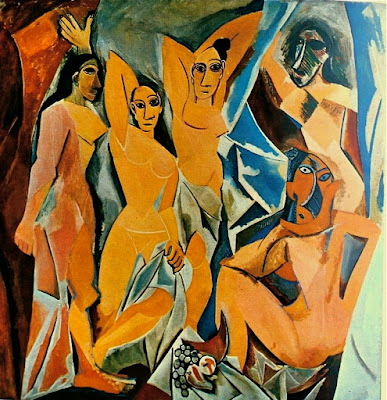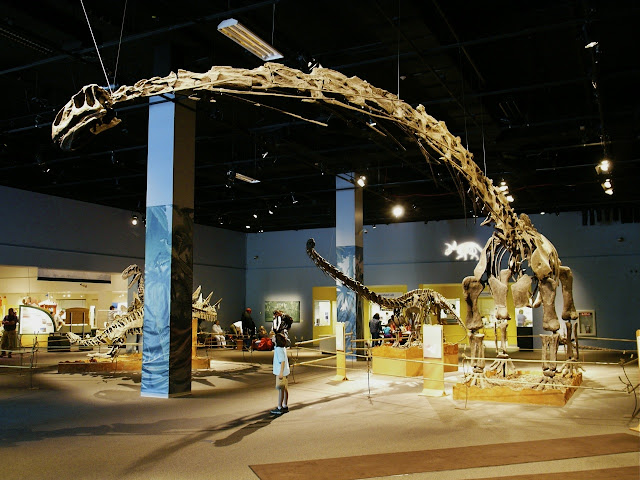During July, I've been having fun with flowers and floral arrangements, and so that's what I'm featuring for this month's Styling The Seasons post. As well as taking a memorable trip to a festival at a nearby lavender farm and getting to cut the bouquet in the yellow vase, I also applied some of the flower arranging skills I've learned lately, and came up with a lovely rose and blackberry floral display.
Flower arranging techniques have always seemed like an impossible mystery to me. When I started gardening a few years ago, I wanted to display flowers from my garden inside my home. That started me on a journey of discovery, to understand the methods involved in creating arrangements, and applying the skills I learned along the way. My greatest sources of inspiration have been Instagram and blogs. At Instagram, I discovered a whole new way of displaying and photographing flowers; and blogs, such as Design Sponge, have flower arranging tutorials. One such tutorial had an arrangement that utilized blackberries in this particular stage of growth, and I loved it so much that I wanted to give it a try. I liked how the coral pink roses have similar hues as the unripe berries, and decided to mix the two:
Flower arranging techniques have always seemed like an impossible mystery to me. When I started gardening a few years ago, I wanted to display flowers from my garden inside my home. That started me on a journey of discovery, to understand the methods involved in creating arrangements, and applying the skills I learned along the way. My greatest sources of inspiration have been Instagram and blogs. At Instagram, I discovered a whole new way of displaying and photographing flowers; and blogs, such as Design Sponge, have flower arranging tutorials. One such tutorial had an arrangement that utilized blackberries in this particular stage of growth, and I loved it so much that I wanted to give it a try. I liked how the coral pink roses have similar hues as the unripe berries, and decided to mix the two:
The white rectangular ceramic container I used in the above arrangement is vintage, but the only marking on the bottom is '495-USA'.
On a recent beautiful sunny Saturday we drove east of town, up the McKenzie River to a Lavender Festival held at the McKenzie Lavender Farm. As you might imagine, there was lavender everything in the booths that were around the flower fields - soaps, perfumes, essential oils - and even lavender soda! There were five varieties of lavender to choose from, and a helpful staff at the ready, handing out scissors for cutting the flowers, and floral wire to wrap it up into bunches. I decided to cut some of each of the five varieties, which created a richly toned bouquet of the various shades of purple.
On a recent beautiful sunny Saturday we drove east of town, up the McKenzie River to a Lavender Festival held at the McKenzie Lavender Farm. As you might imagine, there was lavender everything in the booths that were around the flower fields - soaps, perfumes, essential oils - and even lavender soda! There were five varieties of lavender to choose from, and a helpful staff at the ready, handing out scissors for cutting the flowers, and floral wire to wrap it up into bunches. I decided to cut some of each of the five varieties, which created a richly toned bouquet of the various shades of purple.
I placed the majority of the lavender bouquet in a yellow Haeger floral vase. The Haeger Potteries have been making artware here in the United States since 1871, and like Fiestaware, it's a brand I have always loved collecting, whether one of the newest pieces available today, or a lucky vintage find in a charity shop.
Have I shown you this cute little wooden night lamp before? It may have appeared in some other post in the past, but I haven't yet talked about it.
The Shirokiya company has been making decorative home furnishings, such as this lamp, ever since it was founded in Tokyo, Japan in 1662 - during the Edō period! Of course this particular lamp isn't that old, but my guess, based on the writing style of the sticker on it, is that it's from the 1960s or '70s. Our family has been using it as a night light in our kitchen/dining area, and the small bulb inside lights up an illustrated scenic panel, casting a very nice warm glow at night.
The paper banner shown in the top photo, and the photo below, is one I made last month and featured in my Styling The Seasons post for the month of June. I'm still enjoying it a lot, and decided to leave it up for the summer months. I love how the white banner looks against the turquoise wall!
Thank you for joining me for this month's Styling The Seasons! If you would like to know more about Styling The Seasons, visit Katy Orme's blog Apartment Apothecary and Charlotte's blog Lotts & lots.



